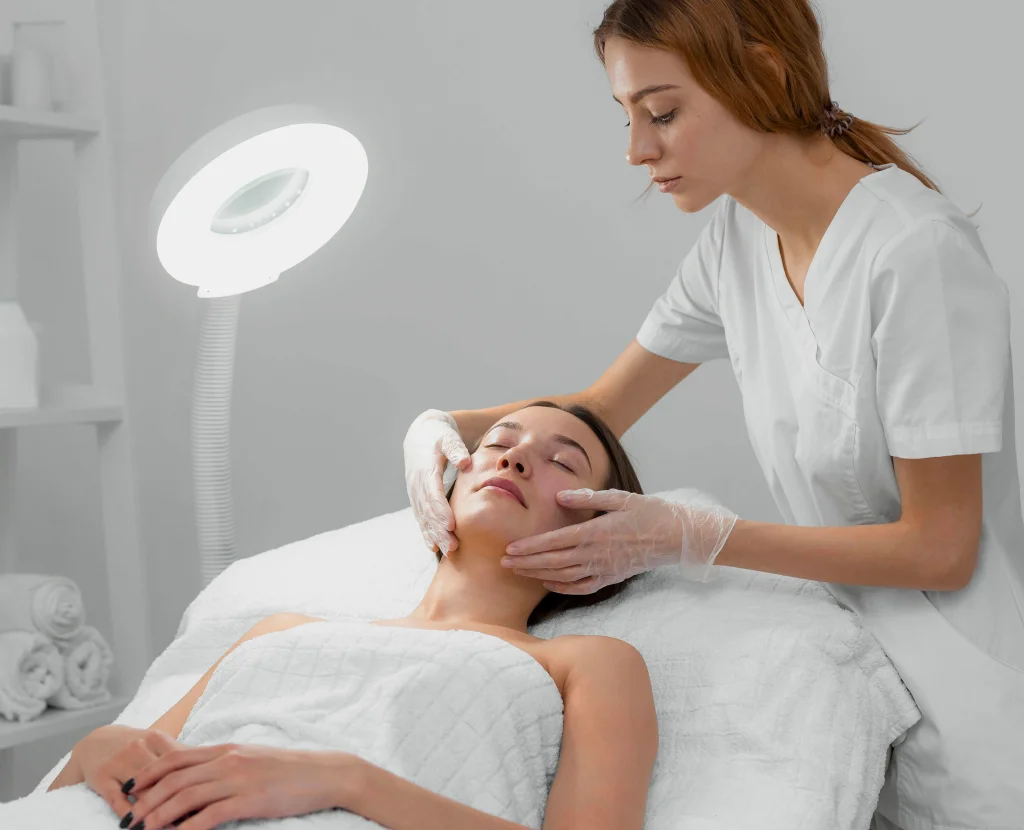The peel process involves applying a chemical solution to the skin, which causes the outer layers to exfoliate, promoting regeneration of skin cells
- 16771 SW 12th Street, Suite C
- Sherwood, OR 97140
- United States

The peel process involves applying a chemical solution to the skin, which causes the outer layers to exfoliate, promoting regeneration of skin cells
A chemical peel is a non-invasive cosmetic procedure designed to improve the appearance of the skin by applying a solution that exfoliates the outer layers. This treatment stimulates the growth of new, healthier skin cells, leaving the skin looking rejuvenated and refreshed. Chemical peels are commonly used to address a variety of skin concerns, including acne, hyperpigmentation, fine lines, and sun damage.
Chemical peels are highly effective in targeting skin imperfections, as they work deep within the layers of the skin. By removing dead skin cells, they encourage cell regeneration and improve texture and tone, yielding noticeable results after just one session.
The procedure is generally well-tolerated, with many patients reporting minimal discomfort. The treatment is tailored to individual skin types and concerns, ensuring that the peel is gentle yet effective.
The results of a chemical peel can last up to 3 months, depending on the type of peel and the individual’s skin condition. The treatment promotes long-term skin health by enhancing collagen production, leading to a smoother and more youthful complexion over time.
Chemical peels are safe when performed by trained professionals using FDA-approved products. They are conducted in certified medical or cosmetic settings to ensure both safety and efficacy, adhering to strict protocols to minimize risks and ensure optimal results.

Chemical peels are ideal for individuals with healthy skin looking to address concerns like acne scars, fine lines, sun damage, uneven pigmentation, or dullness. Candidates should have realistic expectations, be free from active skin conditions, and prefer a non-invasive treatment. Non-smokers typically see better results, as smoking can slow the healing process. Chemical peels are also beneficial for those seeking a youthful appearance by stimulating collagen production. A consultation with a qualified professional is essential to determine the most suitable type of peel for your skin type and concerns.
During the treatment, the practitioner applies a chemical solution to your skin, which may cause a mild tingling or stinging sensation. The peel solution works by exfoliating the outer skin layers, promoting cellular turnover and the growth of healthier skin beneath. Depending on the strength of the peel, the procedure can last anywhere from 15 to 45 minutes.
Yes, it’s common for the skin to be irritated after a chemical peel. Immediately following the procedure, your skin might feel sensitive, tight, or red, and there can be mild swelling or stinging. Over the next few days, you may experience peeling, flaking, or dryness as the skin starts to shed and regenerate. The level of irritation can depend on the type of chemical peel (superficial, medium, or deep) and your skin type. Superficial peels tend to cause less irritation, while deeper peels can result in more noticeable irritation or discomfort.
To reduce irritation and help your skin heal:
The timing for a follow-up chemical peel varies depending on the type of peel used. Generally, superficial peels can be repeated every 4-6 weeks, while deeper peels may require a longer interval for recovery—typically 3-6 months. Your practitioner will provide guidance on when it’s safe for you to schedule additional treatments based on your skin’s response.